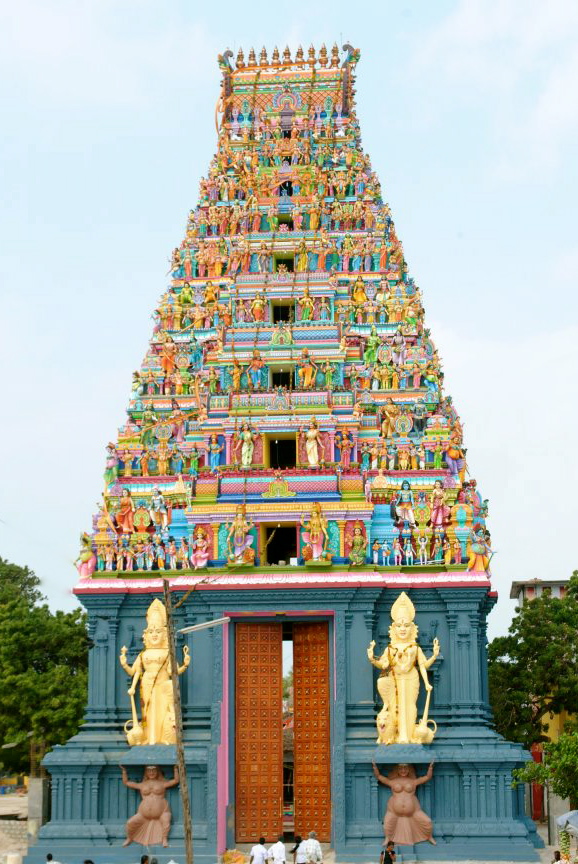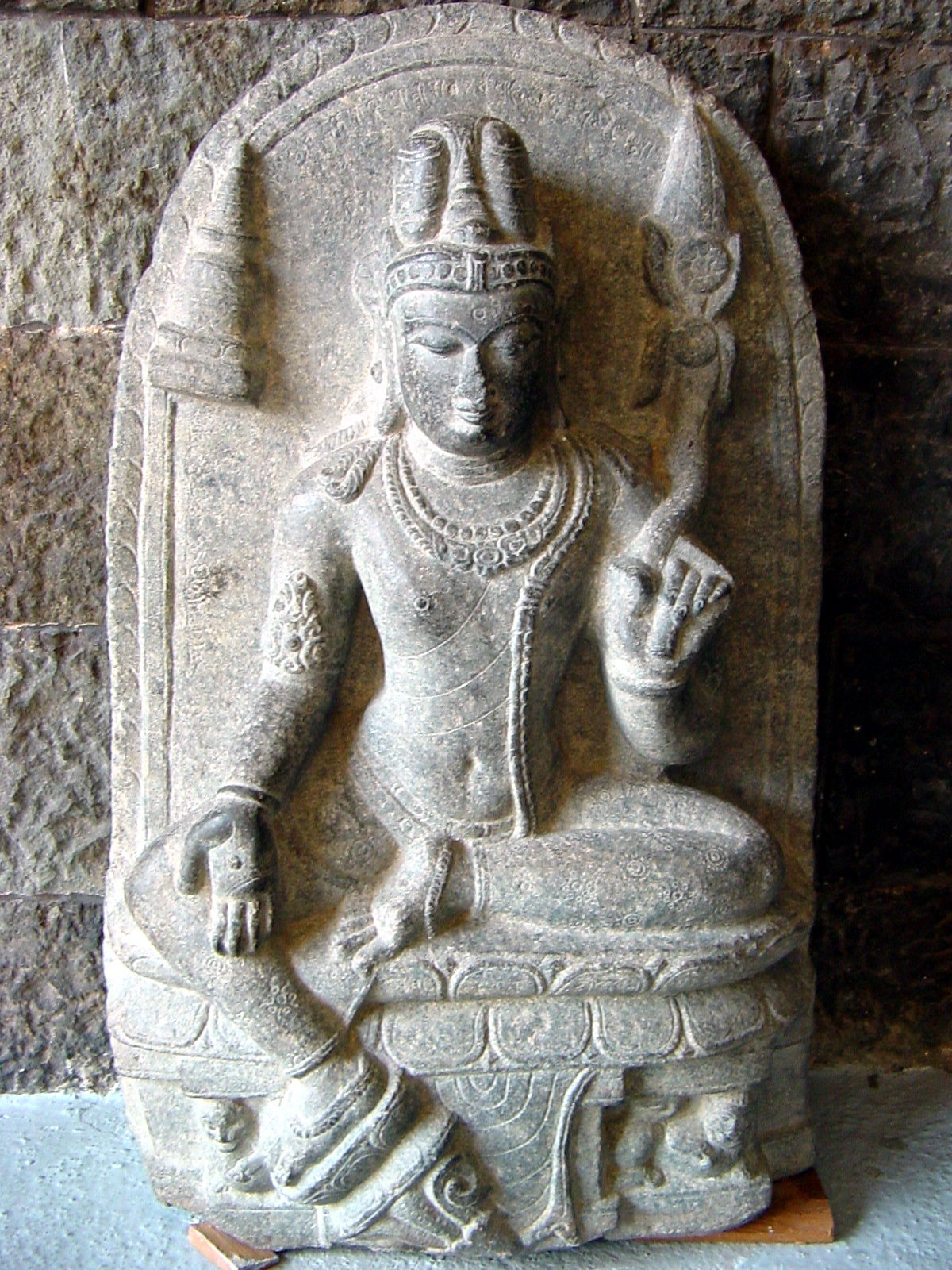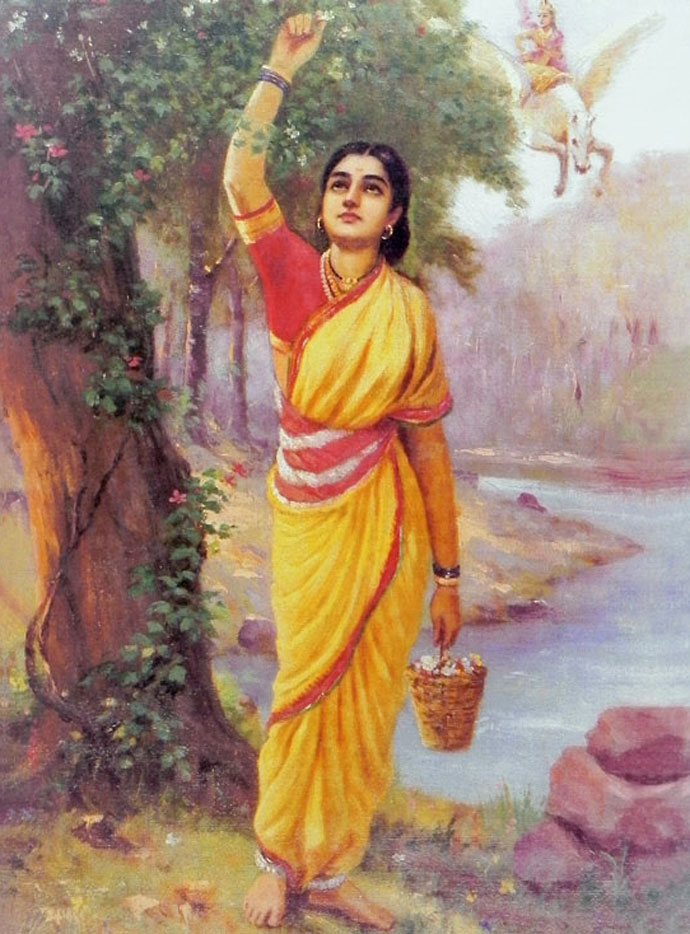|
Nainativu Nagapooshani Amman Temple
Nainativu Nagapooshani Amman Temple _ta.html" ;"title="nowiki/> ta">:ta:நயினாதீவு நாகபூசணி அம்மன் கோயில், நயினாதீவு நாகபூசணி அம்மன் கோயில், translit=Nayiṉātīvu Nākapūcaṇi Am'maṉ Kōyil - Meaning: Nainativu (island/city of the temple); Nagapooshani (The Goddess who wears snakes as jewellery); Amman (Goddess)] is an ancient and historic Hindu temple located amidst the Palk Strait on the island of Nainativu, Sri Lanka. It is dedicated to Parvati who is known as Nagapooshani or Bhuvaneswari and her consort, Shiva who is named here as Nayinaar. The temple's fame is accredited to Adi Shankaracharya, a 9th-century Hindu philosopher, for identifying it as one of the prominent 64 Shakti Peethams in ''Shakti Peetha Stotram'' and its mention in the Brahmanda Purana. The temple complex houses four ''gopurams'' (gateway towers) ranging from 20–25 feet in height, t ... [...More Info...] [...Related Items...] OR: [Wikipedia] [Google] [Baidu] |
Nainativu
Nainativu ( ta, நயினாதீவு ''Nainatheevu'', si, නාගදීපය ''Nagadeepa''), is a small but notable island off the coast of Jaffna Peninsula in the Northern Province, Sri Lanka. The name of the island alludes to the folklore inhabitants, the Naga people. It is home to the Hindu shrine of Nagapooshani Amman Temple; one of the prominent 64 Shakti Peethas, and the Buddhist shrine Nagadeepa Purana Viharaya. Historians note the island is mentioned in the ancient Tamil Sangam literature of nearby Tamil Nadu such as ''Manimekalai'' where it was mentioned as ''Manipallavam'' ( ta, மணிபல்லவம்), and ancient Buddhist legends of Sri Lanka such as '' Mahavamsa''. Ptolemy, a Greek cartographer, describes the islands around the Jaffna peninsula as ''Nagadiba'' ( el, Ναγάδιβα) in the first century CE. History Nāka Tivu / Nāka Nadu was the name of the whole Jaffna peninsula in some historical documents. There are number of Buddhist myth ... [...More Info...] [...Related Items...] OR: [Wikipedia] [Google] [Baidu] |
Manimekalai
''Maṇimēkalai'' ( ta, மணிமேகலை, ), also spelled ''Manimekhalai'' or ''Manimekalai'', is a Tamil-Buddhist epic composed by Kulavāṇikaṉ Seethalai Sataṉar probably around the 6th century. It is an "anti-love story", a sequel to the "love story" in the earliest Tamil epic ''Silappadikaram'', with some characters from it and their next generation. The epic consists of 4,861 lines in ''akaval'' meter, arranged in 30 cantos. The title ''Manimekalai'' is also the name of the daughter of Kovalan and Madhavi, who follows in her mother's footsteps as a dancer and a Buddhist nun. The epic tells her story. Her physical beauty and artistic achievements seduces the Chola prince Udayakumara. He pursues her. She, a nun of Mahayana Buddhism persuasion, feels a commitment to free herself from human ties. She rejects his advances, yet finds herself drawn to him. She hides, prays and seeks the help of her mother, her Buddhist teacher Aravana Adikal and angels. They teach ... [...More Info...] [...Related Items...] OR: [Wikipedia] [Google] [Baidu] |
Mudra
A mudra (; sa, मुद्रा, , "seal", "mark", or "gesture"; ,) is a symbolic or ritual gesture or pose in Hinduism, Jainism and Buddhism. While some mudras involve the entire body, most are performed with the hands and fingers. As well as being spiritual gestures employed in the iconography and spiritual practice of Indian religions, mudras have meaning in many forms of Indian dance, and yoga. The range of mudras used in each field (and religion) differs, but with some overlap. In addition, many of the Buddhist mudras are used outside South Asia, and have developed different local forms elsewhere. In hatha yoga, mudras are used in conjunction with pranayama (yogic breathing exercises), generally while in a seated posture, to stimulate different parts of the body involved with breathing and to affect the flow of prana. It is also associated with bindu, bodhicitta, amrita, or consciousness in the body. Unlike older tantric mudras, hatha yogic mudras are generally inte ... [...More Info...] [...Related Items...] OR: [Wikipedia] [Google] [Baidu] |
Varadamudra
The varadamudra () is a ''mudra'', a symbolic gesture featured in the iconography of Indian religions. It indicates a gesture by the hand and symbolises dispensing of boons. It is represented by the palm held outward, with the fingers outstretched and pointing downwards. Sometimes, the thumb and the index finger meet, forming a circle. The varadamudra and the abhayamudra are the most common of several other mudras seen on divine figures in the art of Indian religions Indian religions, sometimes also termed Dharmic religions or Indic religions, are the religions that originated in the Indian subcontinent. These religions, which include Hinduism, Jainism, Buddhism, and Sikhism,Adams, C. J."Classification of .... References *''Dictionary of Hindu Lore and Legend'' () by Anna Dallapiccola Hand gestures Hindu philosophical concepts Mudras {{Buddhism-stub Hindu iconography ... [...More Info...] [...Related Items...] OR: [Wikipedia] [Google] [Baidu] |
Abhaya Mudra
The Abhayamudrā "gesture of fearlessness" is a mudrā (gesture) that is the gesture of reassurance and safety, which dispels fear and accords divine protection and bliss in Buddhism and other Indian religions. The right hand is held upright, and the palm is facing outwards. This is one of the earliest mudrās found depicted on a number of Hindu, Buddhist, Jain and Sikh images. The abhayamudrā (施無畏印) represents protection, peace, benevolence and the dispelling of fear. The Hindu god Nataraja is depicted with the second right hand making the Abhaya Mudra, bestowing protection from both evil and ignorance to those who follow the righteousness of dharma. In Theravada Buddhism, it is usually made with the right hand raised to shoulder height, the arm bent and the palm facing outward with the fingers upright and joined and the left hand hanging down while standing. In Thailand and Laos, this mudra is associated with the Walking Buddha, often shown having both hands making ... [...More Info...] [...Related Items...] OR: [Wikipedia] [Google] [Baidu] |
Chola Dynasty
The Chola dynasty was a Tamils, Tamil thalassocratic Tamil Dynasties, empire of southern India and one of the longest-ruling dynasties in the history of the world. The earliest datable references to the Chola are from inscriptions dated to the 3rd century BCE during the reign of Ashoka of the Maurya Empire. As one of the Three Crowned Kings of Tamilakam, along with the Chera dynasty, Chera and Pandya dynasty, Pandya, the dynasty continued to govern over varying territories until the 13th century CE. The Chola Empire was at its peak under the Medieval Cholas in the mid-9th century CE. The heartland of the Cholas was the fertile valley of the Kaveri River. They ruled a significantly larger area at the height of their power from the later half of the 9th century till the beginning of the 13th century. They unified peninsular India south of the Tungabhadra River, and held the territory as one state for three centuries between 907 and 1215 CE.K. A. Nilakanta Sastri, ''A Histo ... [...More Info...] [...Related Items...] OR: [Wikipedia] [Google] [Baidu] |
Garuda
Garuda (Sanskrit: ; Pāli: ; Vedic Sanskrit: गरुळ Garuḷa) is a Hindu demigod and divine creature mentioned in the Hindu, Buddhist and Jain faiths. He is primarily depicted as the mount (''vahana'') of the Hindu god Vishnu. Garuda is also the half-brother of the Devas, Daityas, Danavas and Yakshas. He is the son of the sage Kashyapa and Vinata. He is the younger brother of Aruna, the charioteer of the Sun. Garuda is mentioned in several other texts such as the Puranas and the Vedas. Garuda is described as the king of the birds and a kite-like figure. He is shown either in a zoomorphic form (a giant bird with partially open wings) or an anthropomorphic form (a man with wings and some ornithic features). Garuda is generally portrayed as a protector with the power to swiftly travel anywhere, ever vigilant and an enemy of every serpent. He is also known as Tarkshya and Vainateya. Garuda is a part of state insignia of India, Indonesia and Thailand. The Indonesian official ... [...More Info...] [...Related Items...] OR: [Wikipedia] [Google] [Baidu] |
Puliyantivu (Jaffna)
Puliyantivu ( ta, புளியந்தீவு, translit=Puḷiyantīvu; si, කොටිදූව ''Koṭidūva'') is an island off the coast of Jaffna peninsula in northern Sri Lanka, located approximately west of the city of Jaffna Jaffna (, ) is the capital city of the Northern Province of Sri Lanka. It is the administrative headquarters of the Jaffna District located on a peninsula of the same name. With a population of 88,138 in 2012, Jaffna is Sri Lanka's 12th most .... The island has an area of . References Islands of Jaffna District Island North DS Division {{NorthernLK-geo-stub ... [...More Info...] [...Related Items...] OR: [Wikipedia] [Google] [Baidu] |
Nāga
The Nagas (IAST: ''nāga''; Devanāgarī: नाग) are a divine, or semi-divine, race of half-human, half-serpent beings that reside in the netherworld (Patala), and can occasionally take human or part-human form, or are so depicted in art. A female naga is called a Nagi, or a Nagini. According to legend, they are the children of the sage Kashyapa and Kadru. Rituals devoted to these supernatural beings have been taking place throughout South Asia for at least 2,000 years. They are principally depicted in three forms: as entirely human with snakes on the heads and necks, as common serpents, or as half-human, half-snake beings in Hinduism, Buddhism, and Jainism. ''Nagaraja'' is the title given to the king of the nagas. Narratives of these beings hold cultural significance in the mythological traditions of many South Asian and Southeast Asian cultures, and within Hinduism and Buddhism, they are the ancestral origins of the Nagavanshi Kshatriyas. Etymology In Sanskrit, a () ... [...More Info...] [...Related Items...] OR: [Wikipedia] [Google] [Baidu] |
Murti
In the Hindu tradition, a ''murti'' ( sa, मूर्ति, mūrti, ) is a devotional image such as a statue, or "idol" (a common and non-pejorative term in Indian English), of a deity or saint. In Hindu temples, it is a symbolic icon. Thus, not all Hindu images of gods and saints are ''murti'', for example, purely decorative sculptures in temples and on the streets. A ''murti'' is itself not a god in Hinduism, but it is a shape, embodiment, or manifestation of a deity. ''Murti'' are also found in some nontheistic Jain traditions, where they serve as symbols of revered mortals inside Jain temples, and are worshiped in ''murtipujaka'' rituals. A ''murti'' is typically made by carving stone, wood working, metal casting or through pottery. Ancient era texts describing their proper proportions, positions and gestures include the Puranas, Agamas, and Samhitas.Klaus Klostermaier (2010), ''A Survey of Hinduism'', State University of New York Press, , pages 264–267 The expressio ... [...More Info...] [...Related Items...] OR: [Wikipedia] [Google] [Baidu] |
Ahalya
In Hinduism, Ahalyā ( sa, अहल्या, IAST: Ahalyā) also known as Ahilya, is the wife of the sage Gautama Maharishi. Many Hindu scriptures say that she was seduced by Indra (the king of gods), cursed by her husband for infidelity, and liberated from the curse by Rama (7th avatar of the god Vishnu). Created by the god Brahma as the most beautiful woman, Ahalyā was married to the much older Gautama. In the earliest full narrative, when Indra comes disguised as her husband, Ahalyā sees through his disguise but nevertheless accepts his advances. Later sources often absolve her of all guilt, describing how she falls prey to Indra's trickery. In all narratives, Ahalyā and Indra are cursed by Gautama. The curse varies from text to text, but almost all versions describe Rāma as the eventual agent of her liberation and redemption. Although early texts describe how Ahalyā must atone by undergoing severe penance while remaining invisible to the world and how she is pu ... [...More Info...] [...Related Items...] OR: [Wikipedia] [Google] [Baidu] |
Gautama Maharishi
Gautama Maharishi ( sa, महर्षिः गौतम, ), was a sage in Hinduism, who is also mentioned in Jainism and Buddhism. Gautama is mentioned in the Yajurveda, Ramayana, and Gaṇeśa Pūrana and is known for cursing his wife Ahalyā, after she unknowingly had sex with Indra. Another important story related to Gautama is about the creation of river Godavari, which is also known as Gautami. Children According to Valmiki Ramayana, Gautama's eldest son with Ahalyā is Satananda. But according to Adi Parva of Mahabharata, he had two sons named Saradvan and Cirakari. Saradvan was also known as Gautama, hence his children Kripa and Kripi were called Gautama and Gautami respectively. A daughter of Gautama is referred too but her name is never disclosed in the epic. In Sabha Parva, he begets many children through Aushinara (daughter of Uśīnara), amongst whom eldest in Kakshivat. Gautama and Aushinara's marriage takes place at Magadha, the kingdom of Jarasandha. Acc ... [...More Info...] [...Related Items...] OR: [Wikipedia] [Google] [Baidu] |









